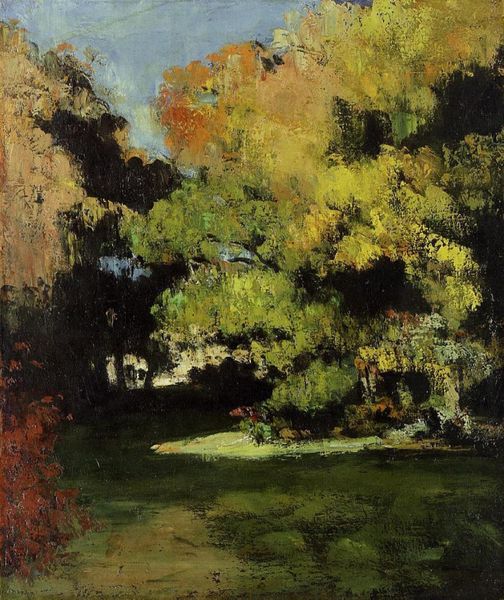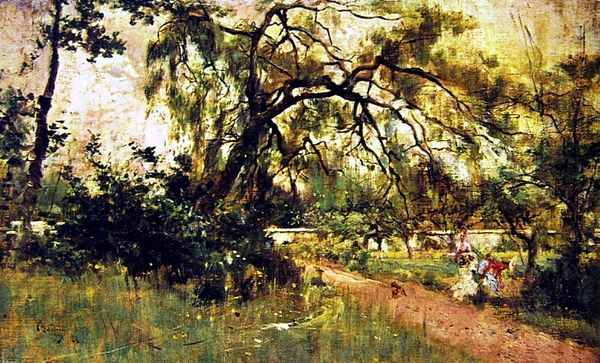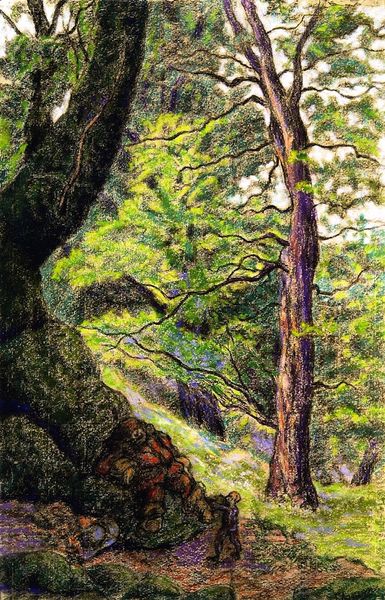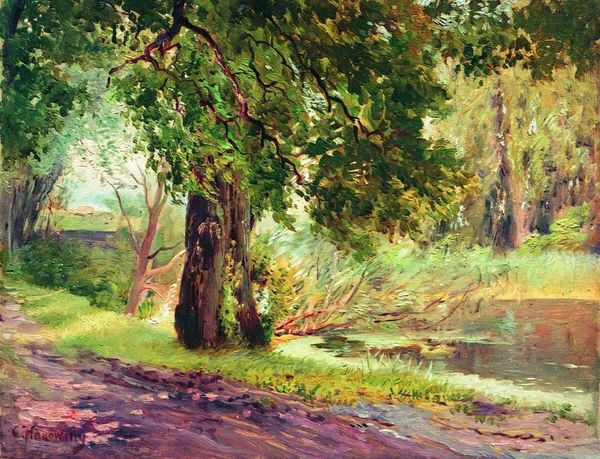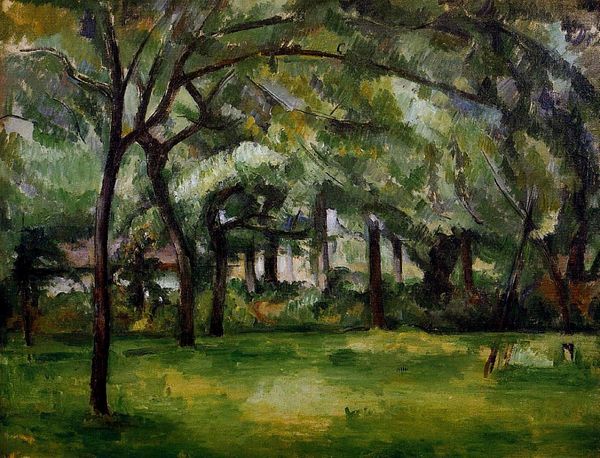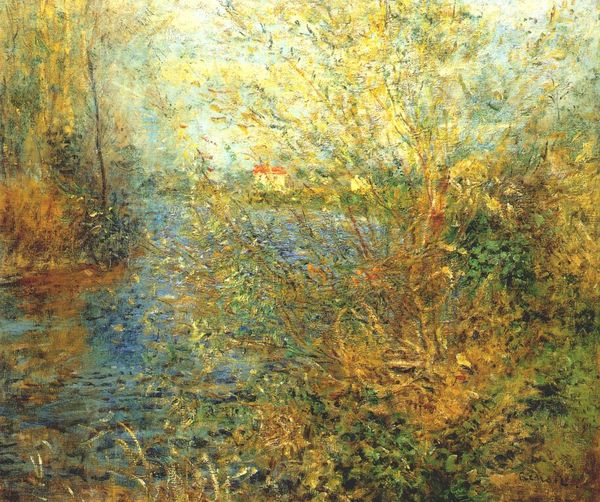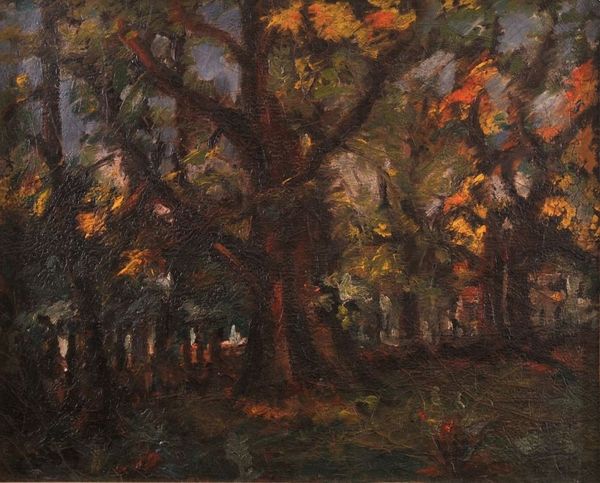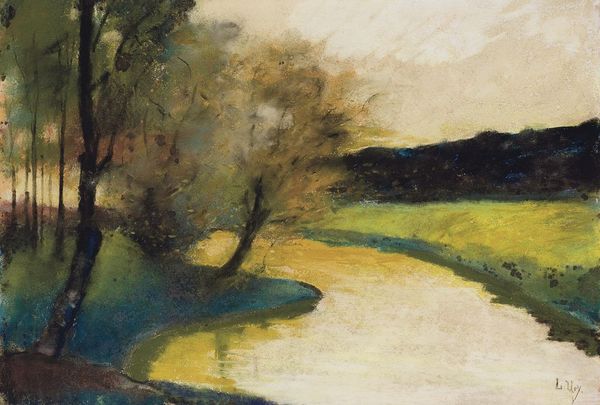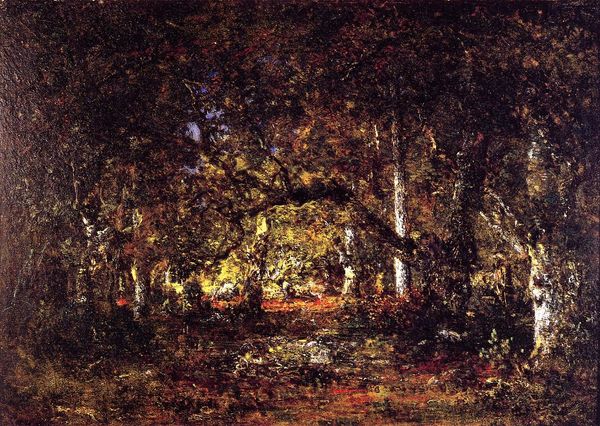
Copyright: Public domain
Curator: Mihály Munkácsy painted "Park in Colpach" in 1886. It's an oil painting done en plein air, which really lends to its immediacy, I think. Editor: It's got that wonderfully moody vibe of a forgotten corner, doesn’t it? That tree is so imposing, its branches draped like a weary soul. It reminds me of childhood summers, hidden away from the adults in a tangle of green. Curator: Absolutely, that emotional resonance is crucial to understanding Munkácsy's work. He was operating within a milieu steeped in Romanticism and early Realism, reflecting shifting societal views towards nature and personal experience. The impasto technique, that thick application of paint, it adds to the emotional depth and tangible texture. Editor: Oh, you can practically feel the bark, can’t you? And the dappled light... I get a sense of transience, like this specific moment in the park, caught forever. I imagine he was working fast. There is something about plein air painting, its almost like stealing light and shadows from time. Curator: Precisely! And remember that the late 19th century was also a period of immense social change, which inevitably affected the lens through which artists like Munkácsy viewed and represented landscapes. Colpach, the location itself, would likely have had its own local socio-economic context influencing his portrayal. The play of light is very important; it may even have religious symbolic meaning. Editor: Or maybe the man just wanted to paint a darn pretty park! The path winding into the background… is it a metaphor for life's journey? Probably! But it's also lovely and inviting. I mean, the way he rendered the distant foliage, almost as an ethereal glow is what creates much of the dreamlike feeling in the artwork. Curator: I would disagree, I think it is meant to be allegorical, but I concede it also is "darn pretty." Ultimately, "Park in Colpach" provides an access point for considering landscape not merely as scenery but as a cultural product imbued with social and political meaning. Editor: For me, it’s just a delicious memory-jogger of humid afternoons. Although, considering it's now, thinking about it I feel my interpretations of the art may be deeply subjective, and largely guided by emotional, ephemeral, perhaps even idiosyncratic feelings it inspires, while yours is anchored in rigorous historical context.
Comments
No comments
Be the first to comment and join the conversation on the ultimate creative platform.
